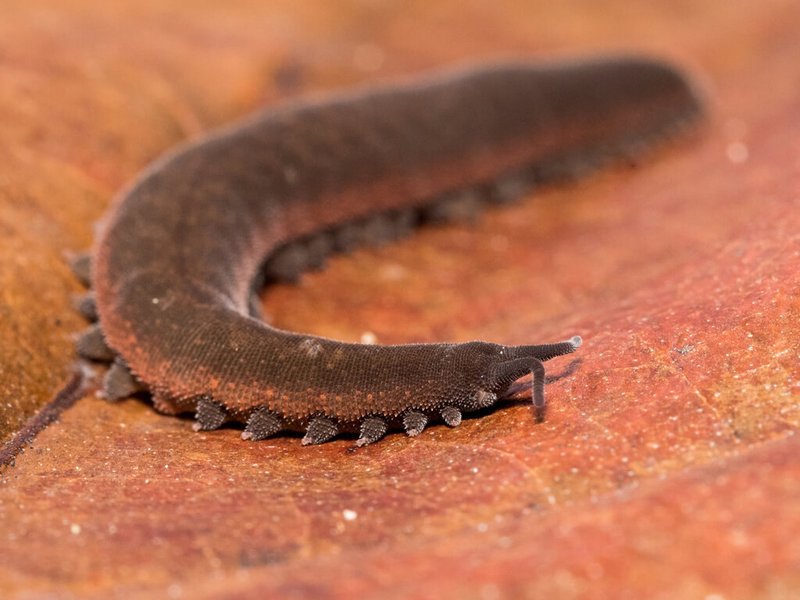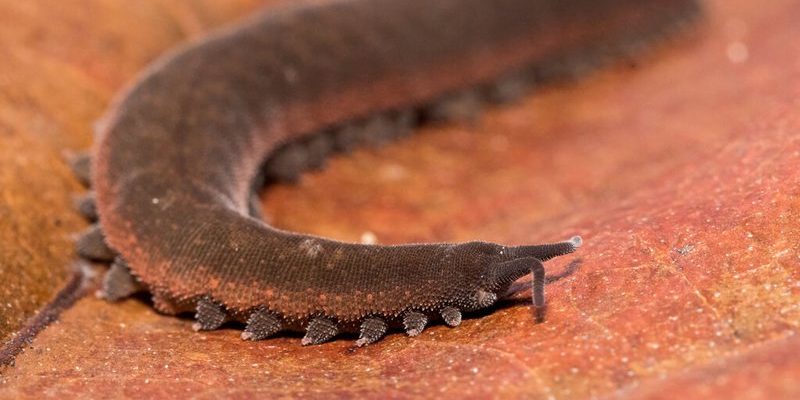
Velvet worms, or Onychophorans, live in damp, tropical environments, making them somewhat elusive. They’ve been around since the time of the dinosaurs, evolving through the ages but still holding on to their quirky, ancient characteristics. If you’re curious about these mysterious creatures and want to learn more, you’ve come to the right place. Let’s dive deeper into the world of velvet worms!
What Actually Are Velvet Worms?
To put it simply, velvet worms are soft-bodied creatures that belong to an ancient group of animals called Onychophora. These little guys typically have a segmented body covered in a soft, velvety cuticle. They’re usually about 1 to 10 centimeters long and can come in various colors, from bright green to dark brown—kind of like nature’s very own paint palette.
One of their most notable features is their fleshy legs. Unlike insects, which have jointed legs, velvet worms have several pairs of these stubby legs that can look almost like little stumps. They move in a unique, almost slinky-like way, which can be amusing to watch. When you see them in motion, it’s hard not to think of a tiny, cuter version of a caterpillar on a mission!
You might be wondering why they’re called velvet worms. Well, the name comes from their soft, velvety texture, but here’s the kicker: they’re not actually worms! Instead, they’re more closely related to arthropods, which include insects, spiders, and crustaceans.
Where Do Velvet Worms Live?
Velvet worms prefer damp, humid environments, making rainforests their paradise. They’re primarily found in places like Central and South America, Africa, and New Zealand. Their habitats usually include leaf litter, rotting wood, and under stones where moisture is abundant. Imagine a cozy, leafy blanket—these are the spots where velvet worms thrive!
The reason for their love of humidity is simple: they breathe through their skin. Yes, you read that right! Their skin is sensitive, and they can easily lose moisture. So, a damp environment helps them stay hydrated and healthy. It’s like me avoiding the sun at the beach—too much heat, and I’m done!
While they’re not as commonly known as other critters, velvet worms can sometimes be spotted in garden areas that mimic their natural habitats. If you’re ever out exploring in the woods after a rain, keep an eye out. You might just see one crawling along a leaf!
How Do Velvet Worms Hunt?
Here’s where velvet worms get really interesting! They are ambush predators, meaning they patiently wait for their prey to come close. Their diet mainly consists of insects and small arthropods. Once they spot their next meal, they spring into action.
Velvet worms have a unique way of capturing their food. They produce a sticky, gooey substance from special glands in their mouth. Imagine a web of glue shooting out to trap unsuspecting bugs! This slime is incredibly effective, allowing them to ensnare their prey quickly. Once the prey is stuck, they can then move in for the feast. It’s like a tiny horror movie scene, but in nature!
Many people find this method of hunting fascinating. It might sound a bit gross, but it’s a remarkable adaptation that helps them survive in their competitive environment. After all, who wouldn’t want to have their dinner served up in such a dramatic fashion?
Reproduction and Life Cycle of Velvet Worms
When it comes to reproduction, velvet worms have their quirks. They’re known to be viviparous, which means they give birth to live young instead of laying eggs. Female velvet worms can carry their young inside them for several weeks, providing a safe environment for them to develop.
Once the tiny velvet worms are ready to leave the safety of their mother, they’re generally quite independent. They have all the essential features they need to survive right from the start. That’s a pretty impressive feat when you think about it!
Interestingly, some species of velvet worms can even regenerate lost limbs. If they lose a leg while escaping a predator, there’s a good chance they’ll grow it back. It’s like having a built-in insurance policy for their survival. This ability to regenerate is one of the many reasons scientists find these creatures so fascinating.
Why Do Velvet Worms Matter?
You might be thinking, “Okay, velvet worms sound cool, but why should I care about them?” That’s a fair question! Velvet worms play a vital role in their ecosystems as predators. By controlling insect populations, they help maintain a balance in their habitats.
Additionally, studying these ancient creatures aids scientists in understanding evolution and biodiversity. Their unique characteristics can offer insights into how life adapted over millions of years. Plus, they can serve as indicators of environmental health, as many species are sensitive to changes in their habitats.
So, the next time you hear about velvet worms, remember they’re not just weird little creatures—they’re important players in the grand scheme of nature!
Where to Find Velvet Worms
If you’re eager to observe velvet worms in their natural habitat, you’ll need to venture into tropical rainforests. While they may not be in your backyard, you could find them on eco-tours or scientific expeditions. Those adventurous enough might also try searching in damp leaf litter or decaying logs.
Some zoos or nature centers might have velvet worms on exhibit, offering a closer look at these intriguing creatures. Just keep in mind that handling wild velvet worms can be harmful to them. If you do spot one, it’s best to admire from a distance.
If you’re lucky enough to find one, take a moment to appreciate how unique they are. With their ancient lineage and fascinating adaptations, velvet worms are truly a marvel of the natural world.
Wrapping Up: The Magic of Velvet Worms
Velvet worms are a prime example of how diverse life can be on our planet. From their unique hunting techniques to their role in ecosystems, they remind us of the wonders of nature. Whether you’re a nature enthusiast or a curious learner, these little creatures are worth knowing about.
Next time you’re out exploring or reading about wildlife, keep an eye out for mentions of velvet worms. They may not be the most popular creature, but they certainly have a captivating story to tell!

